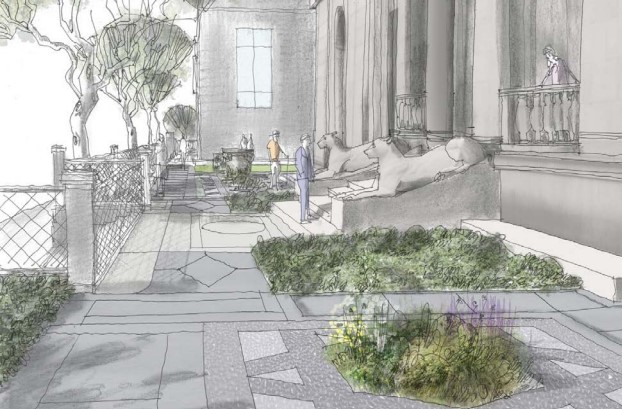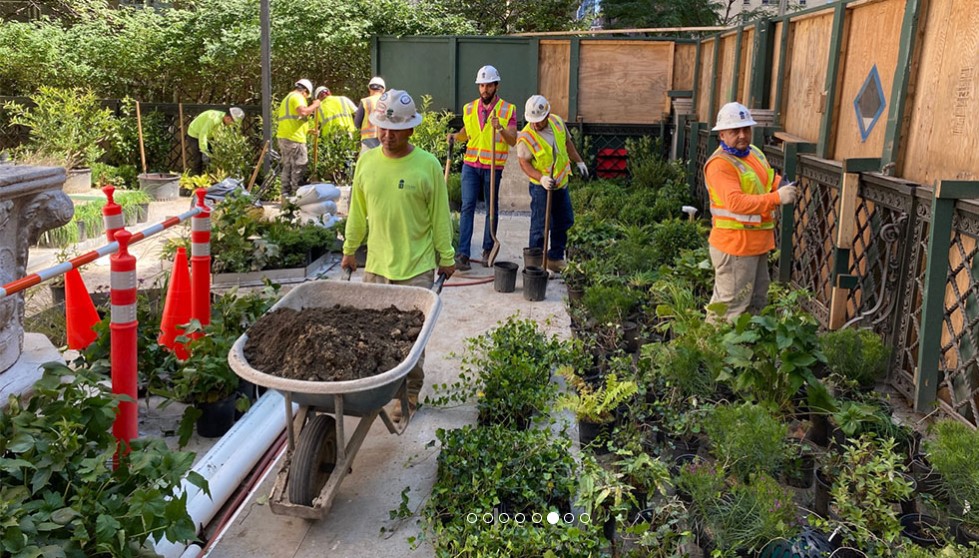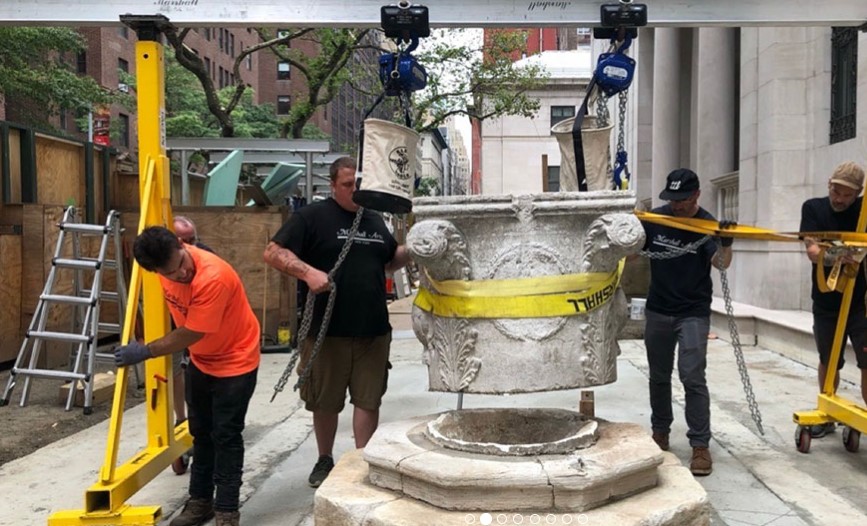Commissioned in 1902 by financier John Pierpont Morgan as his private library, the Morgan Library building was completed in 1906 and is considered one of McKim, Mead & White’s finest works, perfectly embodying the Renaissance ideal of the unity of the arts through the integration of architecture, sculpture, and painting with exceptional craftsmanship and materials. The structure reflects its contents: majestic in design, yet intimate in scale.
On Saturday, June 18, 2022, the Morgan Library & Museum will unveil to the public the recently restored exterior of J. Pierpont Morgan’s Library and the new Morgan Garden. This six-year, $13-million project, the first comprehensive restoration of the landmark library’s exterior in its 115-year history, conserves one of the finest examples of Neoclassical architecture in the United States. It also enhances the surrounding grounds, improves the lighting of the building and enables public access to the 36th street site for the first time in the institution’s history.
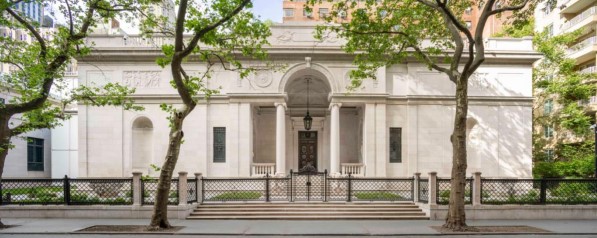
In 2016 –following the restoration of the interior rooms of J. Pierpont Morgan’s Library — the Morgan began planning for the exterior restoration by engaging Integrated Conservation Resources (ICR), a firm specializing in the restoration of historic structures, to provide an initial needs assessment of the Library’s condition. Comprehensive restoration work began onsite in 2019 and addressed issues such as masonry, sculpture, and sidewalk deterioration; masonry joint failure; metalwork corrosion; roof conditions; waterproofing, and bird abatement.
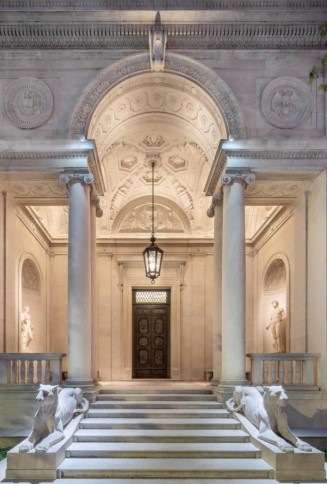
Original entrance to Library, evening view 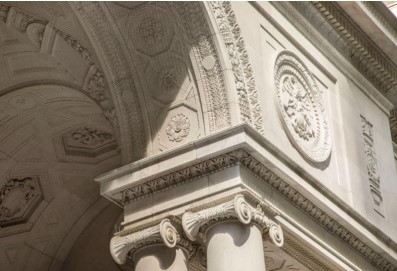
Detail of the facade and loggia 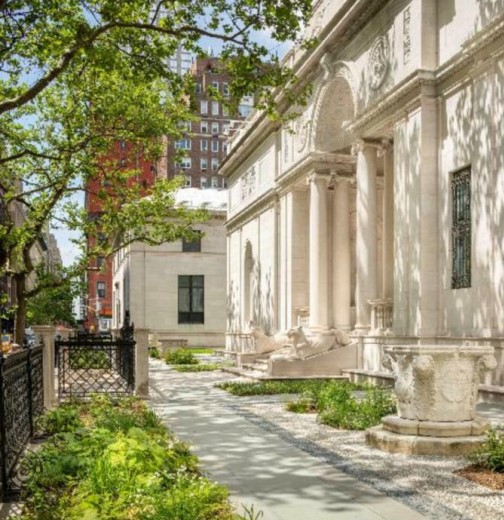
View of garden, looking west
Glenn Boornazian, President and Principal Conservator at ICR, states, “Our philosophy with this project was to use conservation methods that are physically and aesthetically compatible with the original materials. The Library was built so well. Over a hundred years later, it is in relatively good condition and our work was focused on making repairs that would blend in and endure. In history, there are these rare moments where the right people come together: the craftsmen, the patrons, and the architects. That took place here in this remarkable building.”
The restoration of the building presented a unique opportunity to reimagine the natural setting around it and to provide visitor access to the site for the first time in the institution’s history. The previous landscaping—comprised of a
simple lawn and trees—did little to complement the architecture of the Library, nor did it provide accessible pathways or spaces to encourage visitor interaction with the landmark building’s exterior. Increasing the visibility of the Library was also important. Since the Morgan’s main entrance had shifted from 36th Street to Madison Avenue as part of the 2006 Renzo Piano–designed expansion, visitors have been less aware of this remarkable part of the Morgan’s campus.
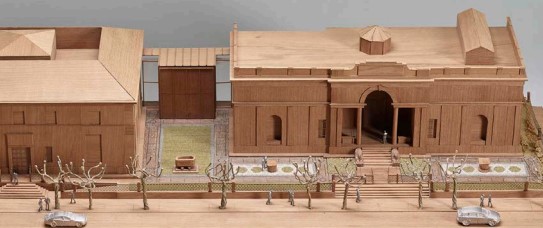
After an extensive search, the Morgan engaged Todd Longstaffe-Gowan Landscape Design to develop designs to address these issues. An accomplished landscape designer, historian, teacher, and author, Todd Longstaffe-Gowan has led notable projects in the United Kingdom, including for Hampton Court Palace, Kensington Palace Gardens, and the Royal College of Art. This is his first commission in the United States.
The new Garden features an accessible route from the interior campus to the exterior of J. Pierpont Morgan’s Library. The low profile of the design respects and enhances the restrained façades of both the original Library and Renzo Piano’s addition. Paths of bluestone, set in patterns that derive from the Library’s floor and exterior paving, provide a fully accessible surface for garden visitors. Elegant pebble mosaics adds texture and visual variety to the ground plane.
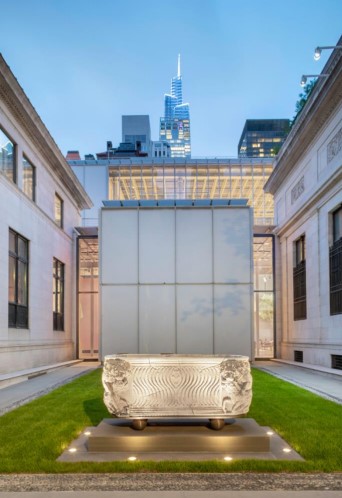
Todd Longstaffe-Gowan notes, “For over century, there has been a blank canvas sitting in front of J. Pierpont Morgan’s Library. Our goal was to develop a new garden that was respectful of the historical context in which it is situated. The garden is designed to create a welcoming setting that allows visitors to experience the library up close and see details they may not have seen before. Making the landscape surrounding the building more worthy of the institution will be the greatest legacy of the garden.”
The Garden’s planting strategy includes an extension of existing groundcover, the introduction of beds of periwinkle flanking the approach to the Library’s loggia, and the addition of colorful, low-height herbaceous beds. The Garden also displays several antique ornaments from the Morgan’s holdings that up until now have been inaccessible to the public. These include a large Roman sarcophagus, a Roman funerary stele, and a pair of Renaissance corbels.
The project also features new lighting that enhances the building’s presence at night and accentuates both the architecture and the new Garden. The new lighting design creates an enchanting, moonlit nocturnal environment, which sits in contrast to and mediates the ambient street lighting. J. Pierpont Morgan commissioned the Library as a private space and the new lighting emphasizes the domestic quality of the architecture through the relighting of the historic lantern that hangs in the Library’s loggia and gentle highlighting of the building’s details and sculptures and the Garden’s ornaments.
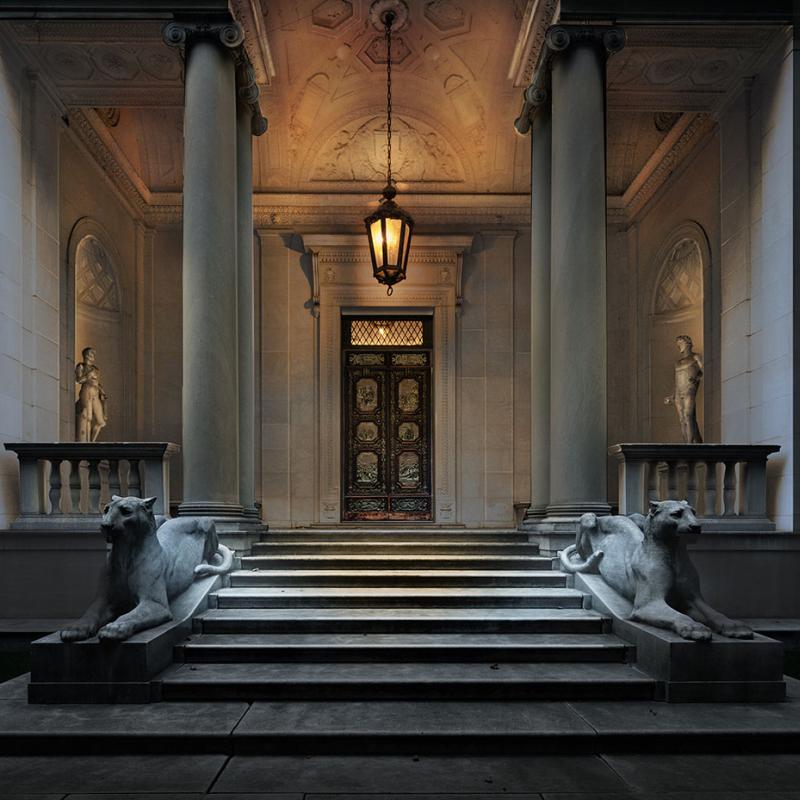
J. Pierpont Morgan’s Library, loggia lighting
Hmmm … isn’t it time to plan a little trip?
The Morgan Library & Museum
225 Madison Avenue at E. 36th St, New York City, NY
212-685-0008
Visitors to the Morgan will be able to experience the exterior of the Library and enjoy the Garden through tours offered every Tuesday, Wednesday, Thursday, and Sunday at 12:30 pm and during Saturdays in the Garden, when visitors with museum admission will be invited to relax and enjoy New York City’s newest greenspace throughout the day. The Garden will remain open seasonally through Sunday, October 9.
Art Things Considered is an art and travel blog for art geeks, brought to you by ArtGeek.art — the only search engine that makes it easy to discover more than 1600 art museums, historic houses & artist studios, and sculpture & botanical gardens across the US.
Just go to ArtGeek.art and enter the name of a city or state to see a complete catalog of museums in the area. All in one place: descriptions, locations and links.
Use ArtGeek to plan trips and to discover hidden gem museums wherever you are or wherever you go in the US. It’s free, it’s easy to use, and it’s fun!
